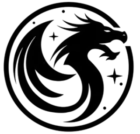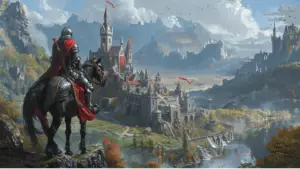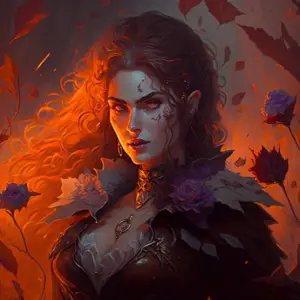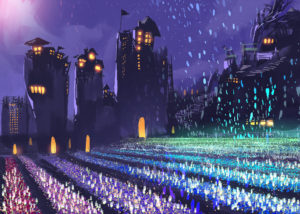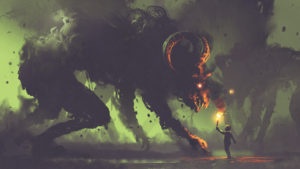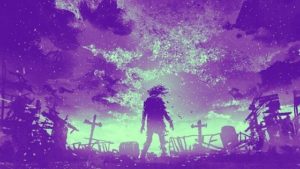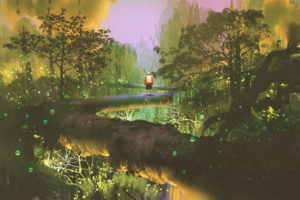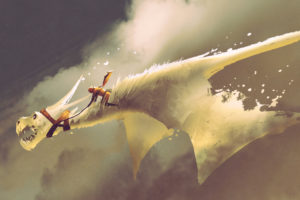Fantasy horror is a genre that combines horror and fantasy. Its main goal is to invoke fear in the reader using components from fantasy. It does this by twisting fantasy elements to take on a darker tone. Fantasy horror is characterized by the level of gore and violence it portrays and the deep fear it brings out in its readers.
While fantasy horror borrows fantasy elements, it differentiates itself from both dark fantasy and grimdark fantasy. It does this by focusing on inducing fear in characters and readers alike. However, dark fantasy and grimdark fantasy are fantasy stories that borrow horror elements.
There are many differing views on what separates fantasy horror from dark fantasy and grimdark fantasy. There are certain similarities but also many differences. While there is no formal definition for each of these genres, this article can give you an idea of how to tell them apart.
Defining Fantasy Horror
Fantasy is a genre of fiction that includes magical elements, the supernatural, or completely unreal imaginings. It is sometimes based on mythology or folklore, and the setting is generally a fictitious world or universe. Fantasy relies heavily on imaginative worldbuilding and immersing the reader in fantastical and wondrous places.
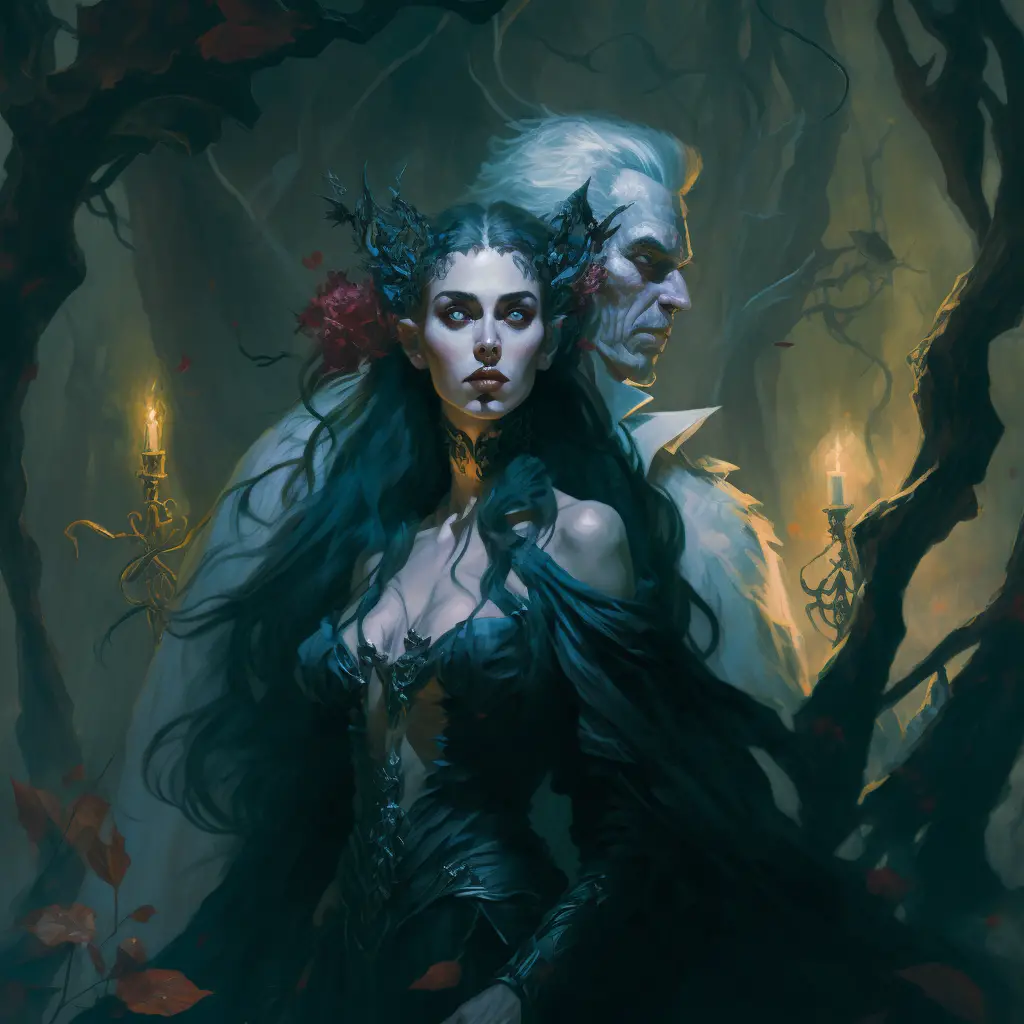
On the other hand, classic horror is intended to evoke fear, disgust, and fright. Classic horror creates an atmosphere of fear using darker elements.
These elements and creatures include demons, the macabre, serial killers, and themes of a similar nature. Readers can often compare the villains of horror stories to real-world fears many people share.
Fantasy horror is a mix of the fantasy and horror genres. While the genre is extremely popular, there has been a lot of argument over the years about the formal definition of fantasy horror. The most popular argument is that fantasy horror predominantly borrows themes from the horror genre and uses fantasy elements to accent those themes.
Horror themes like death, gore, torture, or fear are mixed with the supernatural. These terrifying themes instill a feeling of the macabre into the reader, aiding the central, visceral theme of horror. In this way, fantasy horror is about instilling fear in the reader, as classic horrors would, while also using supernatural elements from fantasy.
An example of fantasy horror is Stephen King’s It. This book can be classified as a fantasy horror because while the story comes across as classic horror, it uses fantasy elements. For example, King uses a supernatural villain with terrifying abilities to inspire fear in readers.
The Differences Between Fantasy Horror And Grimdark Fantasy
Much like other sub-genres in the fantasy genre, Grimdark fantasy does not have a formal definition. There are several arguments on what makes a story grimdark. A common take on grimdark fantasy is that, as the name suggests, it largely adheres to the fantasy genre. However, it is characterized by having much darker tones and often disturbing material.
Grimdark fantasy finds its roots in the early 20th-century genre of “sword and sorcery”. Most readers can agree that this genre was created by Robert E. Howard when he wrote The Shadow Kingdom. It was a bloody story following King Kull’s adventures. He later wrote the Conan the Barbarian series, which opened the door for many others in this genre.
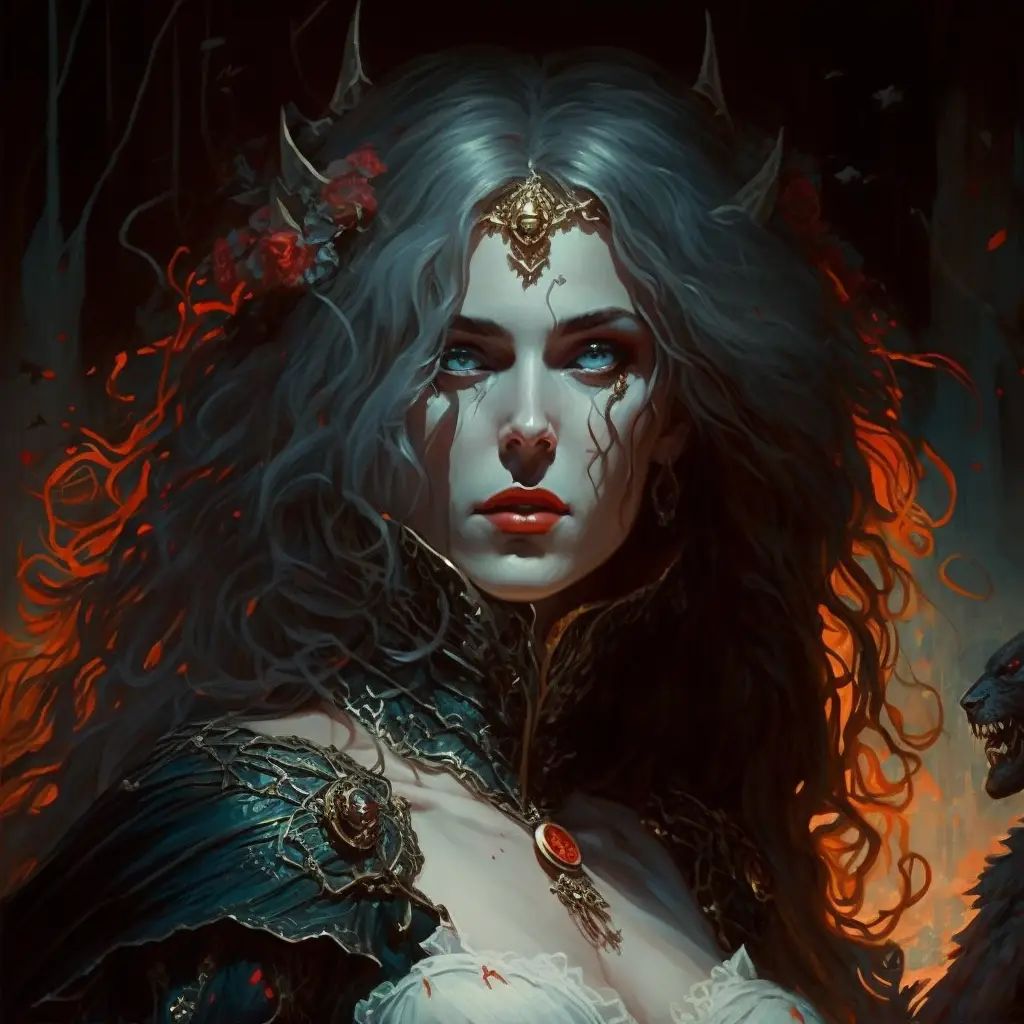
The general setting of a grimdark fantasy novel is one of dark or dystopian worlds. The protagonists of these stories are not your typical heroic, evil-slaying characters with straight moral compasses.
Instead, they follow their desires for revenge or survival, regardless of whether their actions are considered good or evil.
A common theme running through grimdark fantasy novels is the violence and atrocities committed by characters upon each other.
This sub-genre does not shy away from violence and gore but sees it as an aid in setting the mood and furthering the plot. It deals with themes like loss, pain, revenge, and self-interest.
As previously mentioned, fantasy horror aims to induce fear in the reader using a mix of horror and fantasy elements. This sub-genre differs from grimdark fantasy in several ways. Firstly, while fantasy horror aims to scare, grimdark merely uses fear as a tool to gain support for – or antagonism towards – a character.
An excellent example of grimdark fantasy is the famous series A Game of Thrones by George R.R. Martin. In this book series, the White Walkers are a race of magical beings created for protection but now threaten all life. However, they are not supposed to scare us out of our wits. Their main purpose is to turn hated enemies into would-be allies to face a common fear.
Additionally, hope plays a vital role in defining the difference between the two genres. In fantasy horror, the protagonists have abilities or traits that give the reader hope for defeating the evil entity.
This hope typically crumbles as the story progresses when some or all of the characters are injured, enslaved, or killed. The protagonists generally realize they are helpless in the face of true horror.
On the other hand, in grimdark fantasy, there is little hope as we discover ruined worlds, and we expect a loss at every turn. The characters often fight bloody battles and kill for personal gain. Hope is a minor emotion in these situations as the focus is more on the actions of our anti-hero protagonist.
Although there are differences between fantasy horror and grimdark fantasy, there are also similarities. The most obvious of these similarities is that neither of them shies away from gore and violence. This trait is one of the defining features of each of the genres and which few others share.
The Differences Between Fantasy Horror And Dark Fantasy
Dark fantasy is a unique sub-genre of fantasy that uses darker supernatural, mythological, or unreal elements to twist fantasy. It focuses on negative aspects of life such as death, loss, pain, and tragedy.
Dark fantasy typically sticks to its own genre. It mixes fantasy and horror and contains many supernatural elements, which the writer uses to convey mysterious and suspenseful tones to the reader. While it shares traits with grimdark, it is not limited to only bad endings and dystopian worlds. There are plenty of good endings to dark fantasy books as well.
Dark fantasy stories usually center around an anti-hero and a supernatural villain. Aside from the usual goal of defeating the protagonist and taking over the world, the villain forces them to face their fears. Similarly, it forces the reader to confront their own phobias and progress with the protagonist on their journey.
The protagonist in these stories is usually someone with a checkered past or slightly skewed morals. They may lack empathy or have a selfish personality. As the story progresses, the villain forces the protagonist to face their shortcomings by using them to their advantage. The protagonist must either overcome them to win or fall in the end.

As previously stated, the main aim of the fantasy horror genre is to scare the reader. Despite the varying opinions of what defines fantasy horror, most book-lovers agree that it must scare.
Contrary to this, dark fantasy is mainly a fantasy story that borrows elements from horror. The typical themes of a dark fantasy story are longing, loneliness, and regret.
Dark fantasy has a more aesthetic feel to it compared to fantasy horror. Dark fantasy uses the supernatural to build the story. It is, therefore, more involved in the source of – and the reason behind – the villain. Adversely, fantasy horror merely uses supernatural elements to elicit fear within the reader.
In fantasy horror, the supernatural is used, but its explanation is relatively shallow compared to dark fantasy. It gives an explanation as to why the villain is committing heinous acts. However, it does not go much deeper than that.
Dark fantasy delves more into the world’s lore, the villain, and the protagonist. It emphasizes the story behind the magic or supernatural nature of the elements it uses. It utilizes this lore to create a sense of adventure that is generally absent in fantasy horror stories. An example of dark fantasy is Coraline by Niel Gaiman.
Dark fantasy and grimdark fantasy also share similarities. These genre similarities are rooted in the fact that grimdark fantasy was created as a darker, more violent form of dark fantasy. Essentially, grimdark fantasy is a sub-genre within a sub-genre. They both use horror and fantasy to further their plotlines, but grimdark relies much more on themes taken from the horror genre.
Conclusion
Fantasy horror borrows from the fantasy and horror genres. It also shares similarities with dark fantasy and grimdark fantasy as they are all derived from the fantasy genre and borrow themes from other genres. However, there are still subtle differences between these three genres.
The fantasy horror genre is all about creating fear using fantasy elements. On the other hand, dark fantasy and grimdark fantasy twist fantasy elements to achieve horror and further the plots of the stories they tell.
